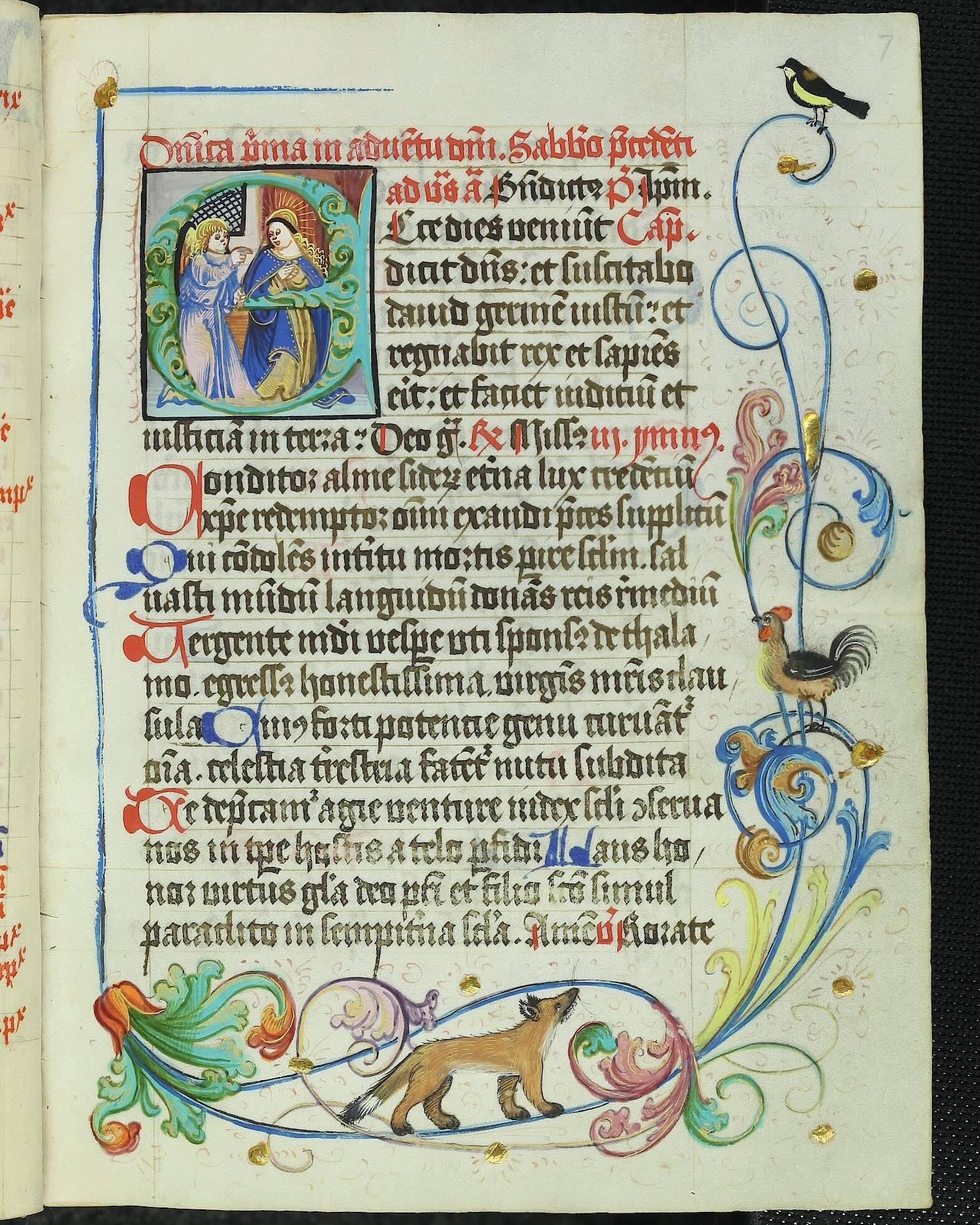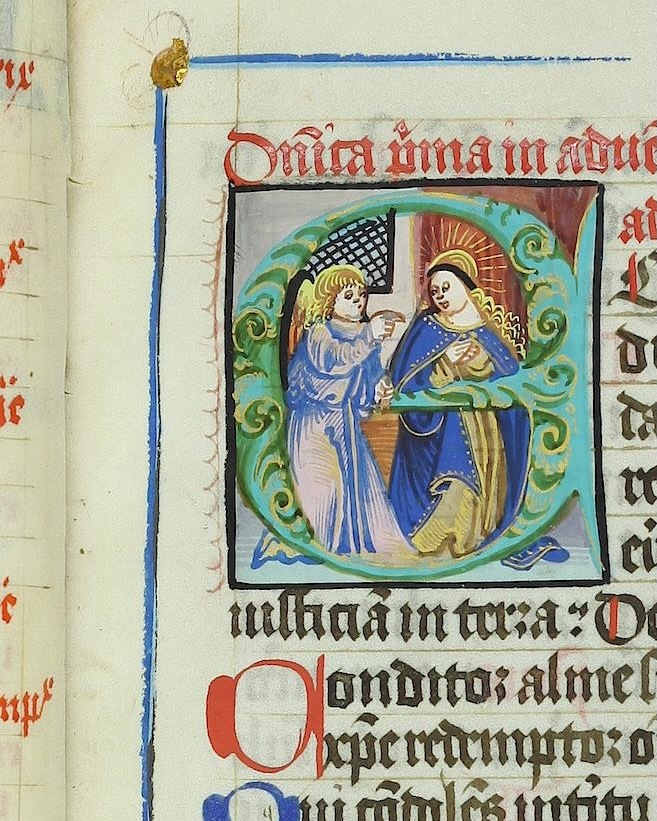What Does The Fox Say? A Hierarchy Of Animal Voices
What Does the Fox Say? A Hierarchy of Animal Voices
This story is part of an ongoing series of editorials in which HMML curators and catalogers examine how specific themes appear across HMML’s digital collections. From the Western European collection, Dr. Jennifer Carnell has this story about Animals.
For thousands of years, languages around the world have attempted to capture the sounds of animals: in English, a rooster will “crow,” in German, schreien, and in Latin, cucurrire, while a hen will “cluck,” glucken, or crispire. The words are called onomatopoeia when they also convey the sounds themselves: a frog says “croak,” quak, or coax, while in Japanese, the sound is kerokero (けろけろ), variances perhaps due to differences in local species. However, onomatopoeia is not always achievable, as some sounds exceed the limits of a language’s phonetics.
To better understand what medieval people might have thought about animal sounds, let’s examine an opening page of a breviary available in HMML’s microfilm collection: project number 43053. The original manuscript is located at Universitätsbibliothek Freiburg im Breisgau in Germany.
This manuscript was likely made between 1461 and 1475 CE for the community of Dominican nuns at Sankt Katharina in the city of Nuremberg, located in what is now Bavaria, Germany. The only page with elaborate decoration is the first page of the Proprium de tempore (Special Office of the season), featuring hymns and psalms for the first Sunday of Advent.

In the margins, we see a fox on the bottom, a rooster in the middle, and a songbird at the very top, creating a visual hierarchy. There is also an apparent social hierarchy, moving from the wild to the domestic (indeed, even though we might think of songbirds as wild, in the medieval period they were also kept as pets to display a person’s high status).
When we listen to the images, moreover, we can hear a hierarchy of sounds. Medieval thinkers were influenced by the hierarchy set forth by the Latin grammarian Priscian (active approximately 500–530 CE), who defined this hierarchy based on whether the sounds themselves conveyed meaning and whether they could be onomatopoeically expressed in writing. Under this paradigm, the fox’s barks and screams would be the lowest form of sound, unmusical and nigh impossible to describe with letters. The rooster’s crow, able to be written down, is slightly higher in the hierarchy (also, in Latin works a rooster’s crow is described as a kind of singing). The songbird’s voice is even more transcribable and musical—appealing to medieval tastes for high, clear notes—and ranks above the rooster. In this way, the positions of the various creatures on the page match their positions on Priscian’s hierarchy of animal voices.
The highest sound on Priscian’s hierarchy is human speech, being both rational and writeable, and it, too, can be found on this page. The initial “E” depicts the archangel Gabriel’s announcement to the Virgin Mary of the conception of Christ, appropriate to the liturgy for Advent. Mary’s responses and Gabriel’s greeting are given visually, heard through gestures and body language and imagined in the mind of the viewer. Moreover, the act of speaking is framed by an actual letter, with Gabriel leaning on the letter “E” as if carried by the breath of God.

Returning to an examination of the marginalia, we notice that fox cranes up his head to look at the rooster; the rooster in turn tilts his head and eyes upward; the songbird’s head appears to be slightly cocked, as if he is looking at the scene of the Annunciation; and Mary turns her gaze to the archangel. In this way, the marginalia is linked and subordinated to the text of the page and, by implication, to the music of the liturgy. A breviary arranges the chants, prayers, and lections of the Divine Office in liturgical order. Yet, despite containing texts intended to be sung or chanted, this breviary and many others like it do not provide musical notation. Instead, this single decorated page offers musical and sonic features through the imagery of beast, human, and angel.
The modern imagination relies heavily on visual imagery, yet sometimes other senses are more privileged—for example, by people with different experiences of the world or from other time periods. In medieval Western Europe, both sight and sound were considered the dominant senses. This may be in part because so much of everyday life, including education and entertainment, was largely influenced by oral tradition, resulting in a stronger aural perception. While looking at medieval texts, we should be aware of the modern bias for visual representation and consider the multisensory imagery available in manuscripts.
So, what does the fox say? It still is a difficult noise to capture, but we do know that a fox can “yelp” or “bark,” keckern, and gannire (at least in English, German, and Latin).

Further Reading:
Elizabeth Eva Leach, Sung Birds: Music, Nature, and Poetry in the Later Middle Ages (Ithaca, New York: Cornell University Press, 2007).




